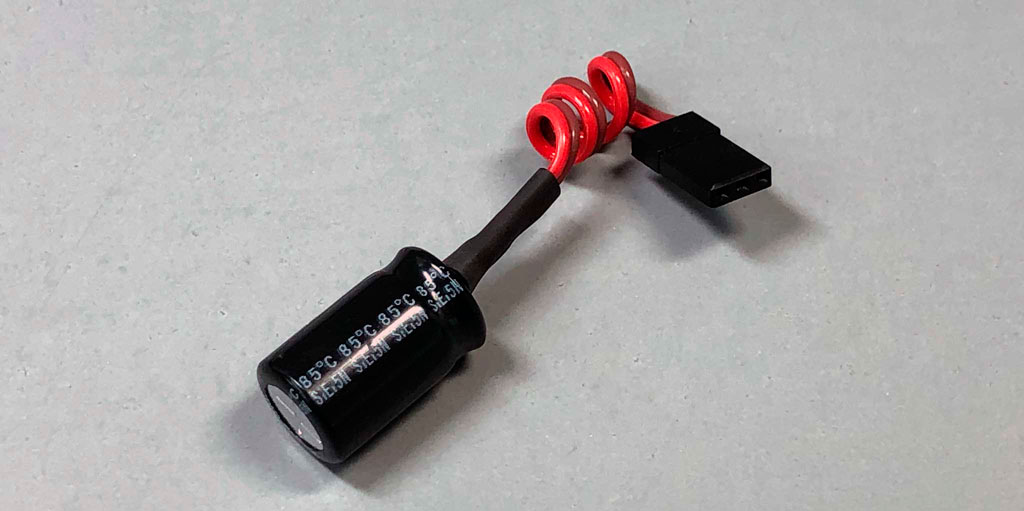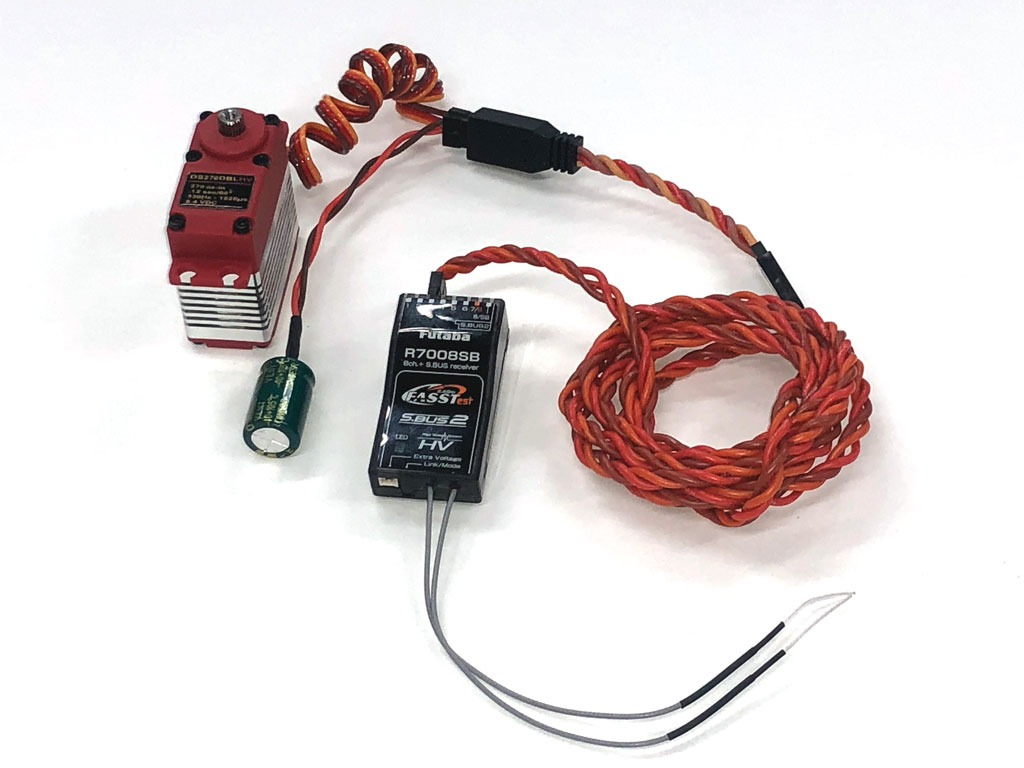This 60in/1500mm (nominal) servo extension, weighs 33g and terminates with male and female ABS plastic 3.5A-continuous type universal radio connectors with crimped gold-plated metal pins on 0.10" centers.
Locking type available.


What many pilots like about ProModeler extensions versus whatever you buy from hobby dealers are they're insulated with silicone instead of PVC. This means they're very soft and supple, which lets them be routed through tight spots and around sharp corners better. That, and the silicone rubber resists abrasion better.
They're also twisted instead of flat so if the ESC ever begins to
fail and emit stray RFI, then the twisting resists allowing the signal
to make it into your receiver. And without getting too deep into the
weeds, the theory behind twisting it it reduces the strength of noise
signals *and* cancels out external RFI-waves by moving a part of the
noise in the direction of the signal and another part in the opposite
direction. However, while stray RFI this is a *much* bigger deal with folks flying ignition powered engines it's still worth a thought with electric-powered models, too. Heads up!
Another
thing to watch for with extensions is because the tabs that hold the
individual pins in place are delicate, make sure you're not being ham-handed and forcing them in such a way as to displace the pins, this is another way of saying use your eyes and confirm the integrity of the connection, capisci? Trust but verify!

Caution for extensions longer than 30"
The longer the extension, the more pronounced the voltage loss. This can be a *big* deal and cost you a model airplane. Learn more about extensions and voltage loss by reviewing:
. . . this article delves into how to calculate the voltage loss based on the thickness of the extension wire.

Now here is where things get complicated.
Adding the high load of a powerful servo on top of the built-in voltage loss due to a long extension means your servo's performance drops due to insufficient current flow (and this is true for all servos, all brands, and it's 100% due to physics so this isn't a ProModeler, or Futaba, or Hitec issue, it's all servos). Added to which, using a more powerful servo makes the issue worse! You need a capacitor.


So what you do is add capacitance. This is done with a capacitor because it charges up when loads are low and discharges to gooses the load (the servo is the load on the system) when it's called on to deliver high torque as well as when it reverses direction. it works kind of how a spotter in the gym may lend you a hand as you struggle on the bench press with a load. So the capacitor is like that spotter but for the servo! In general, you want to add one any time the extension goes beyond 30" long.


So using a cap means the end of the low voltage at the servo problem because it discharges when the voltage is low! Best part is a capacitor is totally transparent in operation (meaning once installed, it requires zero in the way of user intervention to activate, it just works all by itself).
So when - specifically - do you use a cap with extensions?
Basically, whenever you use an extension longer than 30" it's our opinion it's wise to add capacitance at the load (at the servo end). This, in part because the extension adds impedance as well as increasing resistance. Basically, the longer the extension means there's less and less juice available to operate the servo, and this is bad juju. Allow me to reiterate, this is true for all loads to include any and every brand of servo like ours, Futaba, Savox, Hitec . . . everybody!
How do you add a capacitor - in the practical sense?
Far and away the easiest way to add capacitance is in combination with a Y-harness. Simply plug both the capacitor and the servo into the Y-harness and then plug the Y-harness into your extension.


In practice, this looks something like this!

Leave it to hang loose (weighs but a few grams), or apply a spot of Goop to secure it to the air frame and Bob's your uncle!
There are experienced modelers who prefer to eliminate connectors and make up their own extensions. They'll whip out a roll of bulk wire, a crimping tool and connectors (plus solder, an iron, and heat shrink tubing). They'll skillfully make extensions customized to their model in a matter of an afternoon. They'll have fun, gain satisfaction of a job well done, maybe save a little money, and it's called modeling for a reason!
Yes, ditching the extra connectors reduces resistance a tiny bit. Eliminating a few inches of wire here and there also adds up to less resistance. Can you measure it when the job is done? In theory, yes. In practice, it's reasonable to wonder; are there pilots who can feel the difference the slight reduction in resistance delivers? Perhaps amongst those who have been gifted by God himself are some who will say yes (maybe). As for the rest of us (mere mortals), only you know if you're in this class but we're reminded of what Callahan said as Dirty Harry in Magnum Force
"A man's got to know his limitations."
The point is, it's our opinion the exercise of minimizing connections and optimizing wire length is akin to mental masturbation. Why? If for no other reason than because in their quest to do the best possible installation (by soldering and manually crimping the connectors) there's added human error at each crimp and solder joint. And as we all know, only God is perfect. Anyway, we confidently offer these heavy duty 20AWG extensions as a quick and easy solution for placing a servo remotely with greatly reduced effort.